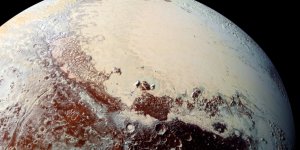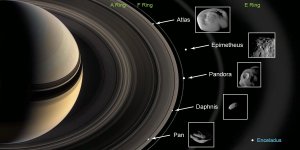| News / Space News |
NASA Mission Reveals Asteroid Has Big Surprises
A NASA spacecraft that will return a sample of a near-Earth asteroid named Bennu to Earth in 2023 made the first-ever close-up observations of particle plumes erupting from an asteroid’s surface. Bennu also revealed itself to be more rugged than expected, challenging the mission team to alter its flight and sample collection plans, due to the rough terrain.

This view of asteroid Bennu ejecting particles from its surface on January 19 was created by combining two images taken on board NASA’s OSIRIS-REx spacecraft. Credits: NASA/Goddard/University of Arizona/Lockheed Martin
Bennu is the target of NASA’s Origins, Spectral Interpretation, Resource Identification, Security-Regolith Explorer (OSIRIS-REx) mission, which began orbiting the asteroid on Dec. 31. Bennu, which is only slightly wider than the height of the Empire State Building, may contain unaltered material from the very beginning of our solar system.
Shortly after the discovery of the particle plumes on Jan. 6, the mission science team increased the frequency of observations, and subsequently detected additional particle plumes during the following two months. Although many of the particles were ejected clear of Bennu, the team tracked some particles that orbited Bennu as satellites before returning to the asteroid’s surface.
The OSIRIS-REx team initially spotted the particle plumes in images while the spacecraft was orbiting Bennu at a distance of about one mile (1.61 kilometers). Following a safety assessment, the mission team concluded the particles did not pose a risk to the spacecraft. The team continues to analyze the particle plumes and their possible causes.
OSIRIS-REx launched in 2016 to explore Bennu, which is the smallest body ever orbited by spacecraft. Studying Bennu will allow researchers to learn more about the origins of our solar system, the sources of water and organic molecules on Earth, the resources in near-Earth space, as well as improve our understanding of asteroids that could impact Earth.
The OSIRIS-REx team also didn’t anticipate the number and size of boulders on Bennu’s surface. From Earth-based observations, the team expected a generally smooth surface with a few large boulders. Instead, it discovered Bennu’s entire surface is rough and dense with boulders.
The team has directly observed a change in the spin rate of Bennu as a result of what is known as the Yarkovsky-O'Keefe-Radzievskii-Paddack (YORP) effect. The uneven heating and cooling of Bennu as it rotates in sunlight is causing the asteroid to increase its rotation speed. As a result, Bennu's rotation period is decreasing by about one second every 100 years.
Separately, two of the spacecraft’s instruments, the MapCam color imager and the OSIRIS-REx Thermal Emission Spectrometer (OTES), have made detections of magnetite on Bennu’s surface, which bolsters earlier findings indicating the interaction of rock with liquid water on Bennu’s parent body. (NASA)
YOU MAY ALSO LIKE

